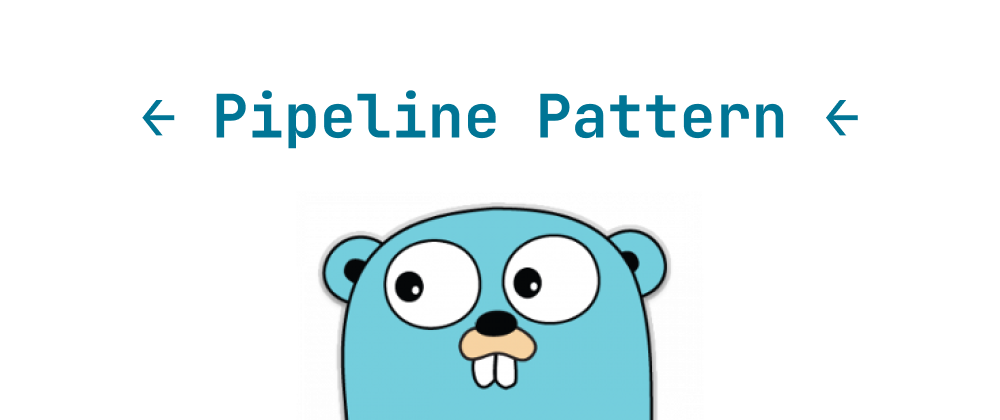Tech Articles

How to Install PyTorch Using Pip
Install PyTorch easily using pip and verify your setup for smooth deep learning.

A Practical Overview of PyTorch Geometric for Graph Neural Networks
PyTorch Geometric enables fast, flexible graph deep learning with scalable, research-friendly features.

Effective Error Handling in Go’s Gin Framework
Best practices for error management and real-time error tracking in Gin-powered Go web services.

How to Install PyTorch Using Conda
Use Conda and official commands for reliable PyTorch installation.

Understanding PyTorch DataLoader: Efficient Data Loading for Deep Learning
PyTorch DataLoader enables efficient, flexible, and scalable deep learning data handling.

TensorFlow vs PyTorch: A Comparative Analysis for 2025
PyTorch leads in research; TensorFlow excels in production deployment.

Comparing MVC and DDD Layered Architectures in Go: A Detailed Guide
A comprehensive comparison of MVC and DDD layered architectures in Go, with structure, examples, and practical guidance.

Boost Go Performance Instantly with Sync.Pool Explained
In concurrent programming, the frequent creation and destruction of objects can lead to significant performance overhead. The `sync.Pool` mechanism in Go language effectively reduces memory allocation and garbage collection pressure through object reuse strategies. This article will provide a comprehensive analysis of this high-performance component, covering usage scenarios, core principles, and practical optimizations.

Learning Go Testing from Kubernetes
A practical guide to unit testing, mocking, and TDD in Go, inspired by real-world Kubernetes practices.

Learning Go Engineering Practices from Kubernetes
Key Go engineering lessons from Kubernetes: efficient concurrency, modular architecture, abstraction, and decoupled component design.

Learning Code Readability from Kubernetes
Practical lessons on naming and commenting for clearer, more maintainable code, inspired by Kubernetes source.

Learning Architecture Design from Kubernetes
Pragmatic lessons from K8s: delay abstraction, embrace necessary duplication, and design for maintainable, evolving systems.

FastAPI Engine: How Uvicorn Delivers Speed: A Deep Dive into Python’s ASGI Server
By deeply understanding the ASGI protocol specification and asynchronous IO model, you can build web servers that meet high-concurrency scenarios. In practice, choose appropriate optimization strategies based on specific business needs to find the best balance between functional completeness and performance.

How Python Talks to PostgreSQL: A Deep Dive from Psycopg to ORM
In modern software development, relational databases still serve as one of the core choices for data storage. PostgreSQL, with its powerful functions, high reliability, and scalability, has become the first choice for many enterprise - level applications. Python, as a concise and efficient programming language, combines perfectly with PostgreSQL. This article will deeply explore how to use Python to operate the PostgreSQL database. It will focus on analyzing the usage methods and precautions of the native driver Psycopg, as well as the essential differences from the Object - Relational Mapping (ORM) framework, so as to help developers choose appropriate technical solutions according to actual needs.

Learning Go Interface Encapsulation from Kubernetes
Discover how Kubernetes uses Go interfaces to hide details, enable mocks, and support multiple implementations.

Why Rust Is the Future of Web Development
Rust’s core design principles—memory safety, zero-cost abstractions, and modern language features—make it excel in web development scenarios. The following sections elaborate, from an engineering practice perspective, on how Rust addresses common pain points in web development and brings unique advantages.

Learning Large-Scale Go Project Architecture from Kubernetes
Kubernetes project structure and design principles for scalable, maintainable Go applications.

PostgreSQL as a Search Engine: Deep Dive into Inverted Indexes
In the era of data explosion, efficient text retrieval capability has become one of the core competitiveness of database systems. As the world's most advanced open - source relational database, PostgreSQL provides a solid technical foundation for building enterprise - level search engines through the built - in **GIN (Generalized Inverted Index)** combined with a full - text search framework. This article will deeply analyze the implementation principle of PostgreSQL's inverted index, demonstrate how to meet complex search engine requirements with specific cases, and discuss performance optimization strategies.

How to Write Better Go Functions
Explores Go’s first-class functions, closures, functors, and practical ways to write clean, maintainable Go code.

Go Error Handling Best Practices
Practical strategies for logging, handling, and minimizing errors in Go programming.

Mastering HTTP/2 and WebSocket Protocols with Pure Python Sockets
Network protocols serve as the foundation of the internet. HTTP/1.0, HTTP/2.0, and WebSocket each support modern web applications in different scenarios. This article will implement the core logic of these three protocols using pure Python sockets to gain an in-depth understanding of their underlying communication principles. All example code in this article has been verified in a Python 3.8+ environment, covering core technologies such as network programming, protocol parsing, and byte stream processing.

Go Caching Best Practices
Balancing memory, consistency, and performance in Go caching

No Frameworks, No Libraries: Learn How Python Web Servers Really Work Using Just Sockets
In the field of web application development, the Web Server Gateway Interface (WSGI) serves as a standard interface between Python web applications and web servers, playing a crucial role. It defines a universal approach that allows different web servers (such as Gunicorn and uWSGI) to work with various Python web frameworks (like Django and Flask). TCP connection pooling, a technique for optimizing network communication performance, avoids the overhead of frequent connection creation and destruction by pre-establishing and managing a certain number of TCP connections. This significantly improves the efficiency and stability of interactions between applications and external services (such as databases and caches). This article delves into how to implement a TCP connection pool based on WSGI in Python, providing technical support for building high-performance web applications.

Understanding SQL Regular Expressions (Regex)
SQL regex enables advanced, flexible string operations within various databases.

Understanding the SQL Order of Operations
SQL’s logical query order differs from its written syntax; knowing it prevents mistakes.

How to Join Three Tables in SQL: A Beginner’s Guide
Joining three tables in SQL is simple with proper JOINs and key columns.

Why Go Is the Language Made for Cloud-Native
Go’s simplicity and concurrency make it the natural choice for cloud-native development and scalable microservices.

When to Use sync vs. channel in Go
Comparison of Go’s sync package and channels for concurrency, with performance benchmarks and usage tips.

Python 3 Type Hints Explained — The Power of Static Typing
In the field of computer programming languages, the type system is a core mechanism to ensure program reliability and maintainability. Understanding the conceptual boundaries of dynamic languages, dynamic typing, static typing, strong typing, and weak typing is the foundation for in-depth analysis of the evolution of Python's type system.

Level Up Your Web Scraping with Python & BeautifulSoup
As the foundational language for web pages, HTML (Hypertext Markup Language) is widely used in fields such as web data processing and web development. Whether developers optimize web structures or data analysts extract information from web pages, HTML processing is indispensable. This tutorial focuses on core operations like HTML parsing, modification, and data extraction, helping readers master comprehensive methods and techniques for handling HTML.

Go Generics: Everything You Need to Know
An overview of Go generics: syntax, examples, type constraints, and practical guidelines for developers.

Getting started with Poetry: The Python dev tool you should be using
In the field of Python development, package management has always been a core issue in project maintenance. Although the traditional tool `pip` can meet basic installation needs, as the scale of projects expands, its shortcomings in dependency resolution and virtual environment management gradually become apparent. For example, when manually removing packages, it cannot automatically handle dependency relationships, which may lead to environmental chaos or dependency conflicts. As a new generation of package management tools, Poetry not only integrates virtual environment management and dependency resolution functions but also provides a clearer project configuration and release process, making it one of the current preferred solutions for Python developers.

How to Wait for Multiple Goroutines in Go: 4 Essential Methods
A guide to synchronizing and waiting for multiple goroutines in Go, including best practices.

Monitoring with Prometheus in Python and How Prometheus Works
**Prometheus** is an open-source system monitoring and alerting toolkit originally developed at SoundCloud. A core component of Prometheus is its data model, which defines the different data types used to represent monitored metrics. Understanding these data types is essential for effectively using Prometheus to collect, store, and query monitoring data. This article will delve into Prometheus data types, provide Python code examples to demonstrate their usage, analyze how they change over time (within one minute and five minutes), explain the underlying change principles, and finally present a Prometheus flowchart using English bash box diagrams.

Pure Python Reimplementation of FastAPI from Scratch
In the realm of Python web development, FastAPI is widely favored by developers for its efficient and concise routing design, as well as its powerful functionality. FastAPI is built based on the ASGI (Asynchronous Server Gateway Interface) protocol, which is different from the traditional WSGI (Web Server Gateway Interface). This article will explore how to start from WSGI to implement a routing scheme similar to FastAPI, while deeply analyzing key concepts such as WSGI and Uvicorn and their interrelationships.

Understanding the SQL `CASE` Statement: Syntax, Use Cases, and Examples
SQL `CASE` adds powerful conditional logic for flexible querying.

How to Delete a Table in SQL
Safely delete SQL tables using `DROP TABLE` and follow best practices.

How to Connect to a MySQL Database Using phpMyAdmin and PHP
A guide to securely connecting PHP to MySQL using phpMyAdmin.

Understanding Go's select: Concepts, Usage, and Best Practices
Learn how to use Go's select statement to handle multiple channels, avoid deadlocks, and implement timeouts.

Go net/http Internals: TCP Socket Management
Overview of TCP connection management and socket handling in Go’s net/http package.

Go Dependency Management with Modules: Everything You Need to Know
Go has become a mainstream programming language in cloud computing and microservices due to its high performance and concise syntax. As project scales expand, traditional dependency management solutions (GOPATH + Vendor) increasingly reveal flaws in version conflicts, collaboration efficiency, and build reliability. Introduced in Go 1.11, Go Module—the official dependency management solution—restructures Go project dependency management through **modular design**, **semantic versioning**, and **automated dependency resolution**. This article dissects how Go Module achieves efficient and reliable dependency management from three dimensions: design principles, core components, and operational mechanisms.

Practical Guide to Pipeline Pattern in Go
Explores Go’s pipeline design pattern using goroutines and channels for efficient, concurrent data processing.

Inside Go’s sync.WaitGroup: The Story Behind Goroutine Synchronization
`sync.WaitGroup` is a basic tool for handling goroutine synchronization in Go language concurrent programming. Its design fully reflects the engineering practice principles such as memory alignment optimization, atomic operation safety, and error checking. By deeply understanding its data structure and implementation logic, developers can use this tool more safely and efficiently and avoid common pitfalls in concurrent scenarios. In practical applications, it is necessary to strictly follow the specifications such as count matching and sequential calling to ensure the correctness and stability of the program.

A Complete Guide to TLS in Go: Full Process Explained
The TLS (Transport Layer Security) handshake is a vital procedure that enables secure communication between a client (such as a web browser) and a server (such as a web server). Below is a detailed breakdown of the entire TLS handshake process:

Deep Dive into Go Slices: Mechanics, Memory, and Optimization
Explores Go slices’ internal structure, memory management, and best practices for performance optimization.

Understanding the OFFSET Clause in SQL
OFFSET in SQL enables efficient pagination by skipping rows in query results.

SQL `CASE WHEN THEN ELSE` Formatting Best Practices
Properly format SQL `CASE` statements for readable, maintainable queries.

Understanding SQL ROW_NUMBER(): Syntax, Use Cases, and Examples
SQL `ROW_NUMBER()` assigns unique row numbers for ranking and filtering.
